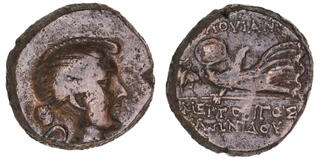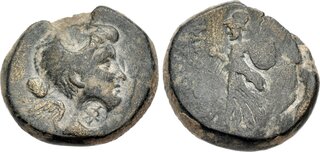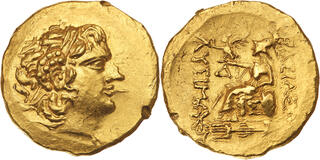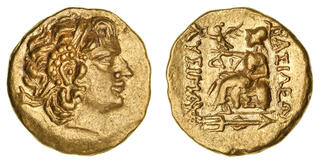Match 1:
Match 2:
Match 3:
| Classical Numismatic Group > Auction 126 | Auction date: 28 May 2024 |
| Lot number: 461 Price realized: This lot is for sale in an upcoming auction - Bid on this lot  | |
| Lot description: CILICIA, Tarsus. Maximinus I. AD 235-238. Æ (36mm, 23.63 g, 1h). Radiate, draped, and cuirassed bust right, seen from behind / The Judgement of Paris: Paris seated left on rock, wearing Phrygian cap and holding apple and pedum, facing Aphrodite, nude, standing right, drawing drapery from shoulders, veiled Hera enthroned right, and Athena standing right, resting shield on ground before her and holding spear. SNG BN 1587 (same dies); RPC VI Online 7109.10 (this coin); SNG Levante –; Cornell 117 (this coin). Earthen red-brown patina, slight roughness. VF. Rare. From the Hesiod Collection. Ex Historical Scholar Collection (Heritage 3101, 25 August 2022), lot 32073; David Simpson Collection (Triton V, 15 January 2002), lot 1755; Classical Numismatic Group XXIV (9 December 1992), lot 497. Before the birth of her second son, Hekaba, wife of King Priam of Troy, dreamed that she had brought forth a flaming firebrand that destroyed the city, and the new-born child was therefore exposed on Mount Ida. Brought up by a shepherd, he was called Paris, and later, by his courage, earned the name Alexander or 'defender of men'. He was beloved by the nymph Oenone, but he deserted her as a result of a tempting suggestion by Aphrodite which led to the Judgement of Paris. When Hermes came to Mount Ida with the three goddesses he called Paris and said to him: "Come here and decide which is the more excellent beauty of face, and to the fairer give this apple's lovely fruit." (Colluthus, The Rape of Helen 130). While Paris reflected, the goddesses, who for the occasion had bathed their immortal bodies, offered him bribes in order to win the apple award of beauty: Athena offered him the command of Phrygia and the destruction of Hellas, or as some say, that he would be bravest of mortals and skilled in every craft. Likewise Hera offered him, besides wealth, the dominion over Asia and Europe. But Aphrodite offered him the hand of Helen, whose beauty was famous worldwide, and this bribe won the apple. Estimate: 2000 USD | 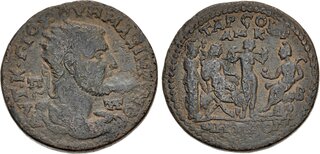 |
Match 4:
Match 5:


